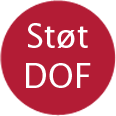Artikler
På denne side vises et bredt udsnit af artikler, hvori resultater fra Punkttællingsprogrammet er anvendt.
2025
O’Reilly, E., Gregory, R.D., Anton, M., Vikstrøm, T. et al. 2025: Developing spatially comparable biodiversity indicators using objective scale-dependent species selection. Ecological Indicators Vol.172 (2025) 113327.
2024
Clausen KK, Heldbjerg H, Fløjgaard C (2024). The effect of small-scale agro-environmental initiatives on avian diversity in agricultural landscapes. Bird Conservation International, 34, e33, 1–9 https://doi.org/10.1017/S0959270924000224
Sterup, J. & Therkildsen, O.R. 2024. Nedgang i fuglebestande i Danmark. Udviklingen i agerlandets fugle og hvid stork. Aarhus Universitet, DCE – Nationalt Center for Miljø og Energi, 9 s. - – Fagligt notat nr. 2024|52
Jan Grünwald, Ainars Aunin, Mattia Brambilla, Virginia Escandell, Daniel Palm Eskildsen, Thomas Vikstrøm m.fl. 2024. Ecological traits predict population trends of urban birds in Europe - Ecological Indicators 160 (2024) 111926, https://doi.org/10.1016/j.ecolind.2024.111926
Vikstrøm, T. & Eskildsen, D.P. 2024: The Danish point counting app has arrived! - EBCC Newsletter, Autumn 2024. https://pecbms.info/the-danish-point-counting-app-has-arrived/
2023
Vikstrøm, T & Eskildsen, D.P. 2023: Mammals in the Danish Common Bird Census. - Bird Census News 2023, 36/1–2: 22–25. European Bird Census Council.
Dale, S. 2023: Irruptions of Bohemian Waxwings in relation to population density and food availability. - Journal of Ornithology, https://doi.org/10.1007/s10336-023-02083-7
Rigal, S., Dakos, V., Alonso, H., Devictor, V., Eskildsen, D.P., Vikstrøm, T. et al. 2023: Farmland practices are driving bird population decline across Europe. – PNAS 120, 21 (2023)
Odelfors, H. 2023: Därför har miljontals fåglar försvunnit
2022
Daniel Palm Eskildsen, Nina Yasmin Ali, Thomas Vikstrøm (2022): Relative habitat use for wintering and breeding birds in Denmark. Ornithologischer Beobachter 119: 362–365.
O’Reilly, E., Gregory, R.D., Aunins, A., Brotons, L., Vikstrøm, T. et al. 2022: An assessment of relative habitat use as a metric for species’ habitat association and degree of specialization. – Ecological Indicators 135 (2022) 108521.
Vikstrøm, T. 2022: The Danish Common Bird Census websites. - Bird Census News 2021, 34/2: European Monitoring News 9–15
2021
Bowler, D., Richter, R.L., Eskildsen, D.P., Kamp, J., Moshøj, C.M., Reif, J., Streibel, N., Trautmann, S. & Vorisek, P. 2021: Geographic variation in the population trends of common breeding birds across central Europe. Basic and Applied Ecology 56: 72-84.
Brlík, V. et al. 2021. Long-term and large-scale multispecies dataset tracking population changes of common European breeding birds. - Scientific Data (2021) 8:21.
Burns F., Eaton M. A., Burfield I. J., Klvaňová A., Šilarová E., Staneva A., Gregory R. D. 2021: Abundance decline in the avifauna of the European Union reveals cross-continental similarities in biodiversity change - Ecology and Evolution 2021; 00: 1–14
Karlsson, L. & Ehnbom, S. 2021: Övervakning av beståndsväxlingar hos tropikflyttande småfåglar 1980–2019. - Länsstyrelsen Skåne.
Madsen, A.B., Bregnballe, T., Fox, A.D., Heldbjerg, H. m.fl. 2021: Vildtbestande og jagttider i Danmark. Det biologiske grundlag for jagttidsrevisionen 2022. Aarhus Universitet, DCE – Nationalt Center for Miljø og Energi,
168 s. - Videnskabelig rapport nr. 434
Morrison, C.A., Auniņš, A., Benkő, Z., Palm Eskildsen, D., Moshøj, C.M. et al. 2021: Bird population declines and species turnover are changing the acoustic properties of spring soundscapes. Nature Communications 12, 6217.
Rojas, S. K. 2021. Skovfugle: Betydning af skovstruktur og landskabselementer, Slutrapport fra projektet. Institut for Geovidenskab og Naturforvaltning, Københavns Universitet.
2020
Heldbjerg, H., Sunde, P. & Fox, A. D. 2020. Fortsat tilbagegang for de specialiserede fugle i agerland og eng i Danmark tyder på, vi næppe når at standse tabet af biodiversitet i landbrugslandet inden 2020. 2020. DOFT aktuelt.
Larsson, K. 2020. Fågelräknare förenar nyttta med nöje. - Fåglar i Uppland 4,2020.
Lehikoinen, A., Lindström, Å., Santangeli, A. et al.: Wintering bird communities are tracking climate change faster than breeding communities. – J. Anim. Ecol. 2021; 90:1085–1095.
Mønsted, F. Det går op og ned for fuglene i Danmark. 2020. - Fejøbladet. 46.årgang, nr. 4.
Prince, K., et al. 2020. Long-term effectiveness of Natura 2000 network to protect biodiversity: A hint of optimism for common birds. - Biological Conservation 253 (2021) 108871.
2019
Bowler, D. E., Heldbjerg, H., Fox, A. D., Jong, M. D. & Böhning-Gaese, K. 2019. Long-term declines of European insectivorous bird populations and potential causes. Conservation Biology, Volume 0, No. 0, 1–11 ©C 2019 Society for Conservation Biology.
Gregory, D. R. et al. 2019. An analysis of trends, uncertainty and species selection shows contrasting trends of widespread forest and farmland birds in Europe. Ecological Indicators 103 (2019) 676-687.
Heldbjerg, H. et al. 2019. Contrasting population trends of Common Starlings (Sturnus vulgaris) across Europe. - Ornis Fennica 96: 00–00. 2019.
Pellissier, V., et al. 2019. Effects of Natura 2000 on nontarget bird and butterfly species based on citizen science data. Conservation Biology, Volume 34, No. 3, 666–676.
Voříšek, P. & Gamero, A. 2019. Data analysis for the conservation of migratory birds – the effect of deliberate killing in the Mediterranean region. Czech Society for Ornithology, Na Bělidle 34, 15000 Prague 5, Czech Republic.
2018
Bowler, D. E., Heldbjerg, H. et al. 2018. Disentangling the effects of multiple environmental drivers on population changes within communities. Journal of Animal Ecology © 2018 British Ecological Society.
Green, M., Haas, F. & Lindström, Å. 2018. Övervakning av fåglarnas populationsutveckling Årsrapport för 2017. Lunds Universitet.
Skriver, J. 2018. Flere fugle i Danmark foretrækker byer frem for natur.
Syberg, K. 2018. Tre millioner fugle er forsvundet, og der bliver ikke gjort noget ved det. INFORMATION.
Wejdling, H. 2018. Sådan får vi fuglene tilbage i landbrugslandet. - Jyllands-Posten.
2017
Heldbjerg, H., Sunde, P., Fox, A. D. 2017. Continuous population declines for specialist farmland birds 1987-2014 in Denmark indicates no halt in biodiversity loss in agricultural habitats. Bird Conservation International (2017) 0 :1 – 15.
Heldbjerg, H., Vikstrøm, T. & Nyegaard, T. 2017. Danske punkttællinger indgår i europæiske forskningsprojekter. Dansk Orn. Foren. Tidsskr. 111 (2017): 1-14.
Madsen, J. & Fox, A. D. 2017. Faglig vurdering af konsekvenser af indføring INDFØRING AF JAGT PÅ GRÅGÅS I AUGUST. Aarhus Universitet, DCE – NATIONALT CENTER FOR MILJØ OG ENERGI.
2016
Caravaggi, A. et al. 2016. Niche overlap of mountain hare subspecies and the vulnerability of their ranges to invasion by the European hare; the (bad) luck of the Irish. Springer.
Fenger, M., et al. 2016 Overvågning af de almindelige fuglearter i Danmark 1975-2015. Fugleåret 2015.
Fenger, M., et al. 2016. Overvågning af de almindelige fuglearter i Danmark 1975-2015. Fugleåret 2015.
Gamero, A. et al. 2016. Tracking progress towards EU biodiversity strategy targets: EU policy effects in preserving its common farmland birds. Conservations Letters.
Heldbjerg, H. et al. 2016. The decline of the Starling Sturnus vulgaris in Denmark is related to changes in grassland extent and intensity of cattle grazing. Agriculture, Ecosystems and Environment 230 (2016) 24–31.
Heldbjerg, H., et al. 2016. Muligheder og begrænsninger, hvis man vil bruge jagtudbytte som mål for fugle og pattedyrs bestandsudvikling. Dept of Bioscience, Aarhus Universitet. HH også DOF.
Heldbjerg, H., Vikstrøm, T. & Nyegaard, T. 2016. Danske punkttællinger indgår i europæiske forskningsprojekter. DOFT 2016.
Kamp, J., et al. 2016. Unstructured citizen science data fail to detect long-term population declines of common birds in Denmark. - Diversity and Distributions, (Diversity Distrib.) (2016) 1–12.
Kayser, B. 2016. Påvirker hørenedsættelse Punkttællingernes bestandsændringer?. C:\Data\DOF\Punkttæl\40år\Høretab_bestandstilbagegang_Pkt40_v0g.docx.
Knape, J. 2016. Decomposing trends in Swedish bird populations using generalized additive mixed models. Journal of Applied Ecology 2016, 53, 1852–1861.
Lehikoinen, A., et al. 2016. Large-scale climatic drivers of regional winter bird population trends. Large-scale climatic drivers of regional winter bird population trends.
Olsen, S. 2016. Klimaet påvirker vinterfuglene (1-5).
Stephens, A. et al. 2016. Consistent response of bird populations to climate change on two continents.
2015
Godet, L. et al. 2015. Dissociating several forms of commonness in birds sheds new light on biotic homogenization. Global Ecology and Biogeography, (Global Ecol. Biogeogr.) (2015) 24, 416–426.
Massimino, D., et al. 2015. Multi-species spatially-explicit indicators reveal spatially structured trends in bird communities. - Ecological Indicators 58 (2015) 277–285.
2013
Eskildsen, A., Larsen, J.D & Heldbjerg, H. 2013: Use of an objective indicator species selection method shows decline in bird populations in Danish habitats. - Dansk Orn. Foren. Tidsskr. 107 (2013): 191-207
2011
Larsen, J. L., Heldbjerg. H., Eskildsen, A. 2011. Improving national habitat specific biodiversity indicators using relative habitat use for common birds. - Ecological Indicators 11: 1459-1466.
2006
Buckland, S. T. 2006. POINT TRANSECT SURVEYS FOR SONGBIRDS: ROBUST METHODOLOGIES. - The Auk 123, 345-357.
2005
Heldbjerg, H. 2005. De almindelige fugles bestandsudvikling i Danmark 1975-2004. DOF.
1997
Jacobsen, E. M. 1997. Hvor mange fugle yngler i Danmark? - Dansk Orn. Foren. Tidsskr. 91 (1997): 93-100.
1996
Christensen, K. D., Jacobsen, E. M. & Nøhr, H. 1996. A comparative study of bird faunas in conventionally and organically farmed areas. - Dansk Ornitologisk Forenings tidsskrift. 90 (1996): 21-28.
Jacobsen, E. M. 1996. Engfugles bestandsændringer og -tætheder 1976-1995, belyst ved hjælp af punktoptællinger. - Dansk Orn. Foren. Tidsskr. 90 (1996): 115-118.
1985
Braae, L. & Kayser, B. 1985. Hvor mange fugle yngler der i Danmark? - Fugle 1985_2_30-31.



